Multi-function Oven+Microwave versus Regular oven
Hernán Grimberg
6 years ago
Featured Answer
Sort by:Oldest
Comments (20)
Hernán Grimberg
6 years agolast modified: 6 years agoRelated Discussions
Steam oven, regular oven, microwave placement
Comments (15)Yuliao, our Wolf L-Series in the end of the island does not get to hot for me to stand in front of and do prep work. Our island is kind of unique in that the it is kind of like a bent "L" shape. There is not a 90 degree angle to make the full L, bur rather about a 30 degree angle or so, kind of hard to describe and I don't think I have a picture handy. But we put the oven on the end, and it is near the fridge. On the other end of the island we have what we call a "Bistro Table". It is like a breakfast bar, but it is square to be just slightly bigger than the island and you can only seat on three sides, though we only do 2 as the third would be in an isle. I have to say that we don't love the look of the Wolf Convection MW either, and if I had it to do over again, I would probably still go built in, but opt for a cheaper MW. I do love having the Convection Oven as an option on the MW though, it basically gives us a third Convection oven. We have used all three at once for making dinners for family. Though we normally only use the MW as an oven as a last resort and only for small things, like a small dish of cooked carrots. They take almost an hour and are at a different temp than the other things we were cooking. It was only like $100 extra for the Wolf Conv MW compared to their standard MW so it was really a no brainer for that price when doing a full kitchen remodel. I wanted to get the 36" BS range top with griddle, but my wife talked me out of it. I think I am very happy she did, not sure how much I would have used it. We now have a 1950's cast iron griddle to span the two middle 15K burners and that works out great for us. I store it in the Wolf L-Series when I am not using it. I do love having all 6 burners for the extra space and I have used all 6 on occasion. so that is nice to have. Phil...See Moreopinion: double wall ovens vs combination wall oven and microwave
Comments (13)It depends upon how you want to use that second oven. The microwave/convection oven requires you to choose between a glass base or a metal base, depending upon which process you're using. If you envision using the Advantium (I presume the other alternatives are similar in this regard) for an oven frequently and you also use a microwave frequently, I think you would find changing these out irritating. If, instead, you will only use it infrequently as an oven and frequently as a microwave, then it's easy enough to use. My Advantium preheats in roughly 5 minutes. It cools down very fast and I have not had any problem using it as a microwave right after using it as an oven. (I'm using it now on the countertop during the temporary kitchen phase. A real godsend!) If you go this route, you want to have a convenient location for storing whichever base isn't being used at the time along with the rack that isn't used during microwaving....See MoreWill have a range and wall oven, add a speed oven or microwave?
Comments (6)@plllog--thank you for the wonderful review of the Advantium. I have been considering one, but I don't want it in my oven stack since it won't match my non-GE oven selection. I don't care for any food that is microwaved and I believe the speed cook option combines microwave cooking with the other heating elements. Microwaved chicken (or leftover chicken for that matter) is one of the ickiest things in the world to eat IMO! If I need speed but the microwave won't do, I tend to reach for my convection toaster oven with great results--even for potatoes and casseroles. Not as fast as steam, but quicker than the large oven. @huruta--how do you like your CSO? I'm trying to decide on a double oven vs. single + CSO. My concern is crisping in the CSO and cleaning it since I don't believe they are self-cleaning. I'm thinking a 48" range top with grill and griddle, plus oven combo and microwave drawer since I can't say I'm that drawn to a convection microwave for the same reason I'm not drawn to the speed oven. Am I missing something on the speed oven? Or the CSO? Or a microwave drawer vs. a convection microwave? @oliverchang10--I also like the idea of both gas and electric. I've been cooking with a gas oven for years and find I prefer it to electric, but I keep hearing electric is more precise. Can you share your reasons for wanting both? Thanks to all for sharing your experiences and thoughts!...See MoreBlack Stainless Versus Regular Stainless Steel
Comments (0)I am considering Black Stainless instead of regular Stainless Steel as a finish for new kitchen appliances that I am buying very soon and want advice from those who own such appliances and others who are considering this new finish. Black stainless looks sharp, but is it truly more fingerprint and smudge resistant and easier to clean? What do you clean it with? Also some have said online that it scratches and dents more easily than stainless steel and that you then see silver underneath..... is this true? In particular, I am considering refrigerator models by Samsung and LG (please see my earlier post and comment if you know anything about the particular models that I am considering.) However, what I am most worried about is when I must replace my built-in microwave and wall ovens, I will be limited in choice and locked into buying from certain companies if I choose black stainless over stainless steel for a refrigerator. The black stainless of Samsung is a little darker than the black stainless of LG, and I am not sure if these companies make good wall ovens or microwaves. It is possible that Kitchen Aid and GE also make some sort of black stainless according to Yale Appliance, but I am not sure about mixing appliance companies. But I do value function over aesthetics, so I want the best mid-range company for each appliance in my kitchen. Need advice quickly, since I need to buy soon!...See MoreHernán Grimberg
6 years agoHernán Grimberg
6 years agoHernán Grimberg
6 years agoHernán Grimberg
6 years agoHernán Grimberg
6 years agoHernán Grimberg
6 years agolast modified: 6 years agoplllog
6 years ago
Related Stories
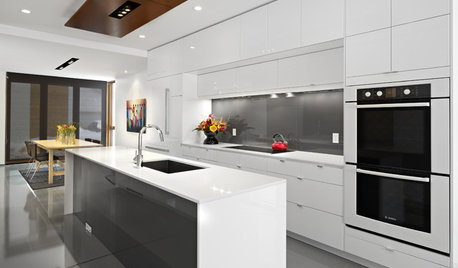
KITCHEN APPLIANCESFind the Right Oven Arrangement for Your Kitchen
Have all the options for ovens, with or without cooktops and drawers, left you steamed? This guide will help you simmer down
Full Story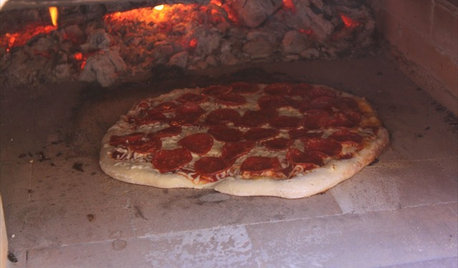
GREAT HOME PROJECTSHow to Get a Pizza Oven for the Patio
New project for a new year: Light a fire under plans for an outdoor oven and claim the best pizza in town
Full Story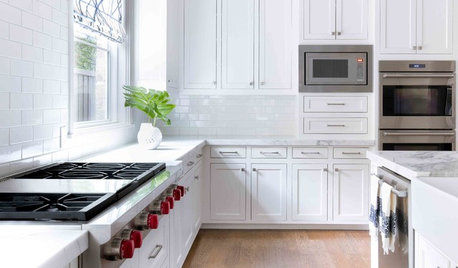
KITCHEN APPLIANCES9 Places to Put the Microwave in Your Kitchen
See the pros and cons of locating your microwave above, below and beyond the counter
Full Story
KITCHEN ISLANDS8 Narrow Kitchen Islands With Function to Spare
Yes, you can fit an island into your small kitchen. These spaces show how
Full Story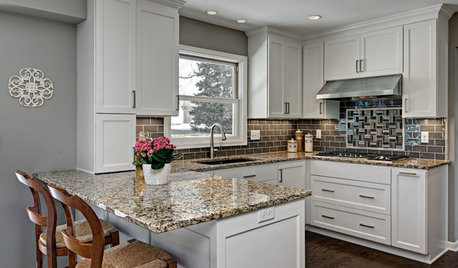
BEFORE AND AFTERSSmall Kitchen Gets a Fresher Look and Better Function
A Minnesota family’s kitchen goes from dark and cramped to bright and warm, with good flow and lots of storage
Full Story
HOME TECHCook Smarter With New Wi-Fi Kitchen Gadgets
Whip up meals with high-tech help, thanks to a phone-connected oven and teakettle, plus a web-surfing cutting board
Full Story
KITCHEN DESIGNA Cook’s 6 Tips for Buying Kitchen Appliances
An avid home chef answers tricky questions about choosing the right oven, stovetop, vent hood and more
Full Story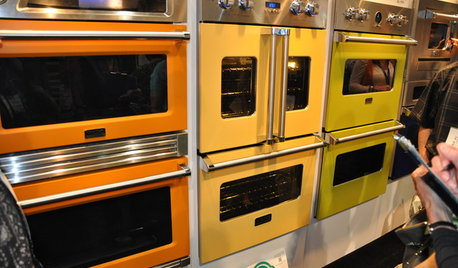
KITCHEN DESIGNStandouts From the 2014 Kitchen & Bath Industry Show
Check out the latest and greatest in sinks, ovens, countertop materials and more
Full Story
HOUSEKEEPINGTackle Big Messes Better With a Sparkling-Clean Dishwasher
You might think it’s self-cleaning, but your dishwasher needs regular upkeep to keep it working hard for you
Full Story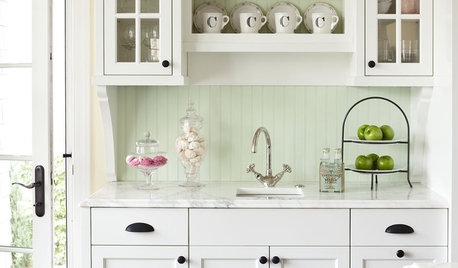
KITCHEN DESIGNModernize Your Old Kitchen Without Remodeling
Keep the charm but lose the outdated feel, and gain functionality, with these tricks for helping your older kitchen fit modern times
Full StorySponsored
Columbus Area's Luxury Design Build Firm | 17x Best of Houzz Winner!



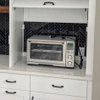
plllog